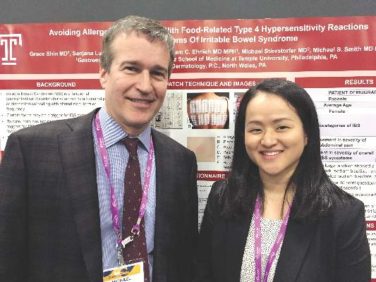AT CROI 2016
BOSTON (FRONTLINE MEDICAL NEWS) – A majority of Ebola virus survivors continue to have significant physical, psychological, and sociological consequences for an extended period after discharge, investigators report.
Among 417 Ebola virus survivors enrolled in a follow-up study in Guinea, about 80% had residual clinical signs up to 9 months after discharge, reported Dr. Eric Delaporte of the French National Institute of Health and Medical Research (INSERM) and Montpellier (France) University.
Results of a second, small study, also from Guinea, suggest that up to 10% of men infected with Ebola have semen that remains positive for the virus for nearly a year after disease onset, said Dr. Daouda Sissoko of INSERM in Bordeaux, France.
“The results describe a post-Ebola syndrome with frequent clinical symptoms long after discharge, the gravity of ocular complications, long-term RNA positivity in semen, and the frequency of psychological consequences of the disease,” Dr. Delaporte said at a media briefing prior to presentation of the data in an oral session at the 2016 Conference on Retroviruses and Opportunistic Infections.
Dr. Delaporte is a coinvestigator in the Postebogui Cohort Study looking at Ebola survivors in Conakry and Macenta, Guinea. The goals of the study are to provide follow-up care for survivors and to describe the clinical, biologic, virologic, immunologic, and psychosocial consequences of infection with Ebola virus.
At CROI 2016, investigators reported on the first 417 patients enrolled, including 60 children. The median age was 28 years.
The investigators found that 46% of patients reported joint pains or other rheumatologic signs, 32% had neuropsychiatric signs, 29% reported chronic headache, 22% reported fatigue, and 16% had ophthalmologic signs,
Ophthalmic slit-lamp examinations in 160 patients showed 24 cases of uveitis, 4 cases of episcleritis, 2 cases of keratitis, and 2 cases of blindness in children due to inflammatory cataracts.
Of 160 semen samples tested, 28% were positive for Ebola RNA up to 9 months after disease onset. By 1 year, however, all semen samples tested negative, Dr. Delaporte said.
The investigators also found that among 131 patients discharged from an Ebola treatment center in the Guinean capital of Conakry and followed for a mean of 5 months, 20% had a score on the Center for Epidemiologic Studies depression scale (CES-D) that indicated the patients could benefit from psychological or psychiatric interventions.
Viral reservoir in semen?
In the second study, Dr. Sissoko and colleagues enrolled 26 men who had been discharged from three Ebola treatment units in coastal regions of Guinea from February through June, 2015. The investigators obtained semen specimens every 3-6 weeks until two consecutive samples were negative for Ebola virus on reverse transcriptase polymerase chain reaction testing (RT-PCR).
In all, 19 of the men had semen positive for Ebola RNA at baseline. At a median of 250 days of follow-up 25% of patients continued to have semen positive for Ebola.
The investigators used linear mixed modeling to estimate that at 11 months, approximately 10% of patients will continue to shed Ebola virus in semen, Dr. Sissoko said.
The investigators recommend testing semen samples from each man who has recovered from an Ebola infection until the semen test negative on two consecutive samples.
Both studies were supported by INSERM. Dr. Delaporte and Dr Sissoko reported having no conflicts of interest.





